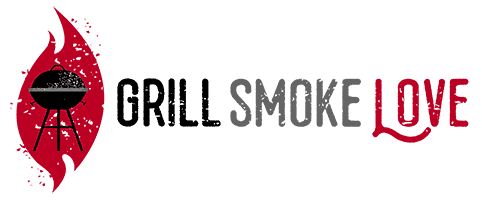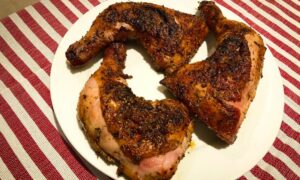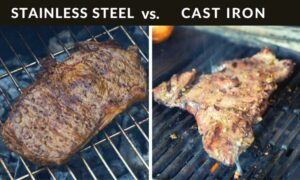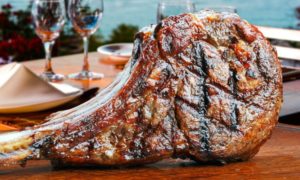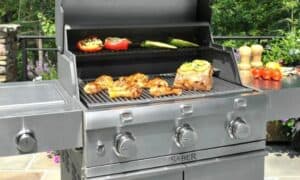If you’re looking for grilling simplicity, charcoal is the way to go. Grills are cheap, and charcoal is widely available.
But that doesn’t mean there aren’t nuances and ways to make your grilling experience better. Many chefs have been touting the benefits of using only natural lump charcoal.
That’s right, there are different types of charcoal you can use.
But which one is right for you, and which one should you use for your backyard cookout?
Let’s take a proper look at lump charcoal and briquettes and what are their main differences.
Thinking about what to cook next on your charcoal grill?
Try my recipe for Chinese chicken on a stick. It’s a simple dish with flavors that will knock your socks off!
What is Lump Charcoal?
Lump charcoal is one of the most natural products you can cook with. It is made from hardwoods that have burned in a low-oxygen environment.
This process removes all moisture and sap from the wood. There are no other steps to the process and no other additives.
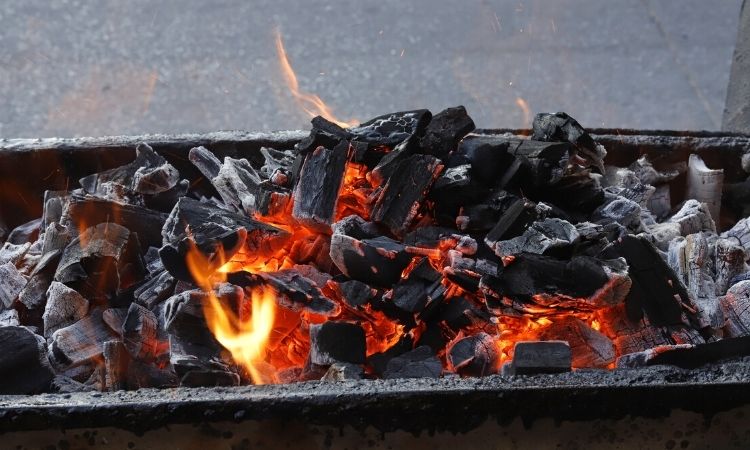
When you open a bag of lump charcoal, you see, well, lumps of charcoal!
It looks like what you’d pull out of a campfire the next morning. There are bits of wood, burned and charred, each one a different shape and size.
Advantages and Disadvantages of Lump Charcoal
Using lump charcoal for grilling is not the easiest option. It can take a bit of practice to master all the secrets. But once you do, it’s a very versatile and natural way of cooking.
Here are the pros and cons of lump charcoal:
Pros of Lump Charcoal
- Extremely hot burn
- All natural wood with no additives
- Easy to light and quick burning
- Very little ash produced
Cons of Lump Charcoal
- Uneven sizes of lumps makes distribution difficult
- Burns faster than briquettes — harder to use for long-cooking recipes
- Lacks consistency from bag to bag or maker to maker
- More expensive than briquettes
What are Charcoal Briquettes?
Compared to lump charcoal, the first thing you’ll notice about briquettes is that they are uniformly sized and shaped. That provides many advantages because it means they’ll burn at a very predictable rate.
Their shape is also designed to stack in an even pile, allowing each briquette to get airflow that avoids hot and cool spots.
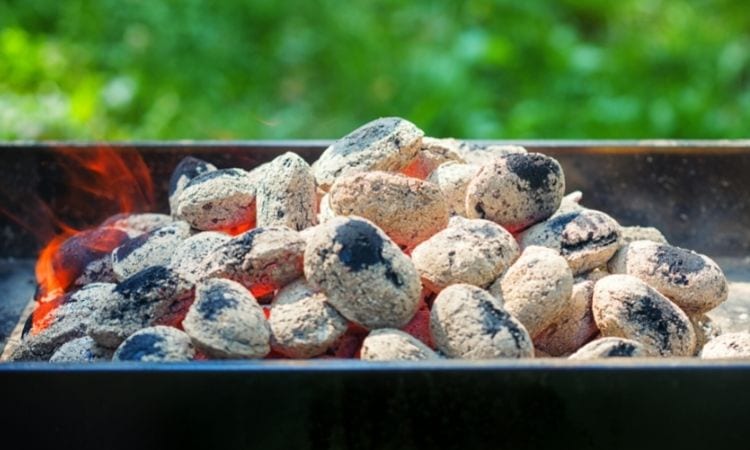
As you might suspect, briquettes are the more processed option. They are made in a factory and primarily consist of pressed sawdust — but there are other additives.
None of the major brands list all ingredients, but most resources will tell you that they sometimes consist of cornstarch, limestone, borax, or coal. The purpose of these additives is to extend the burn time.
Not all briquettes are created equally, however. Some have even more stuff added to make them easier to light.
Some briquettes might even have lighter fluid built-in, so you can start them with a match. In general, these are best avoided. The fewer chemicals you add to your food, the better.
Advantages and Disadvantages of Briquettes
Grilling with briquettes is the easier option that will most likely give beginners better results.
Here are the pros and cons of briquettes:
Pros of Briquettes
- Evenly sized and easy to distribute on the grill grates
- Long burn time
- Consistent temperatures
- Predictable cooking
- Available in a variety of types, with various wood fillers added for smoky flavors
Cons of Briquettes
- Contains extra additives
- Not as hot as lump charcoal for searing recipes
- Some users complain of a chemical taste in their food
- Lots of ash production
- Least natural, most processed option
Main Differences of Using Lump Charcoal vs Briquettes
Lighting Up
I recommend always lighting charcoal without lighter fluid. The best way to light either lump charcoal or briquettes is with a chimney starter or an electric charcoal starter.
Another fast and convenient method is to use a butane torch.
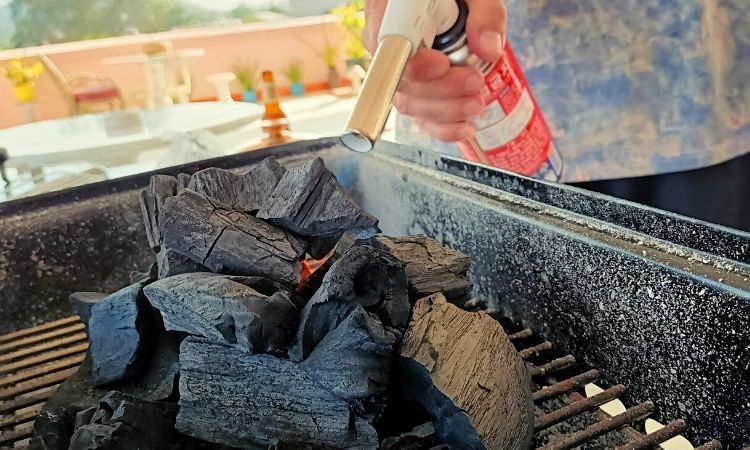
You’ll find that lumps come up to temperature a little faster. While the briquettes take a little longer to get burning, they last longer in the end.
How They Burn
Lump charcoal burns with extreme heat and quite quickly. The exact burn rate will depend on the size of the lumps and how they are arranged.
Briquettes are designed to burn slower. Their extra additives slow the burn down, and their shape and consistent size keep them spaced evenly with good airflow.
Food Taste
The difference in taste between the two is debatable. Purists argue that lump charcoal is the only option since it contains only pure wood. Some chefs claim to smell or taste the chemical additives in briquettes.
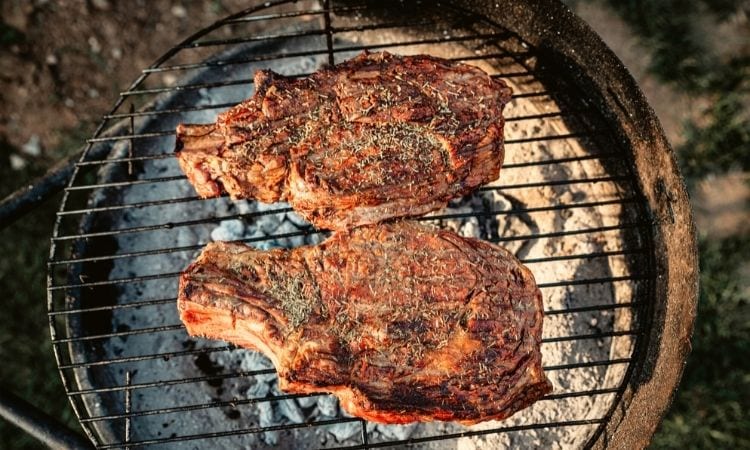
In the end, it’s a matter of personal preference. Both lump charcoal and briquettes are relatively easy to use once you get the hang of each one. Both produce great flavors on the grill, and both have their strengths and weaknesses.
If you’re looking to smoke or add smoky flavors to your food, lump charcoal is likely the best option. However, the fuel is less important than setting up a smoker box with wood chips or chunks — that’s what will provide the smokiest flavors.
Ash Production
Briquettes produce a lot of ash, while lump charcoal produces hardly any.
Price
Generally, lump charcoal is more expensive and a bit harder to find.
Briquettes are widely available from several manufacturers, and it’s unlikely that you won’t find several varieties at your local big-box retailer. Even your local convenience store likely has a bag of briquettes for sale.
On the other hand, lump charcoal might require a trip to a better hardware or a specialty grill store. While it is more expensive, the difference is negligible — a few bucks per bag at the most.
Lump Charcoal or Briquettes – Which One Do You Choose?
Now that you have an idea of the differences between the products, how do you choose one to use?
There’s no one size fits all answer here.
If you’ve been cooking for years on briquettes and are happy to continue, you might be aggravated switching to lump charcoal. Your tried-and-true cooking techniques will have to change, and you might walk away wondering what the hubbub about lump charcoal is.
On the other hand, if you’re new to natural cooking and smoking and want to try the purest methods possible, lump charcoal is the way to go. You’ll undoubtedly get the best flavors, and working with hardwood charcoal lumps will come naturally with a bit of trial and error.
Lump charcoal will always have its place. Burn it in your chimney starter for super-hot sears that can exceed 1,000 degrees, or spread them over your grates for steak caveman-style — cooked right on the coals. Nothing else provides the same authenticity and purity of flavors and ingredients.
